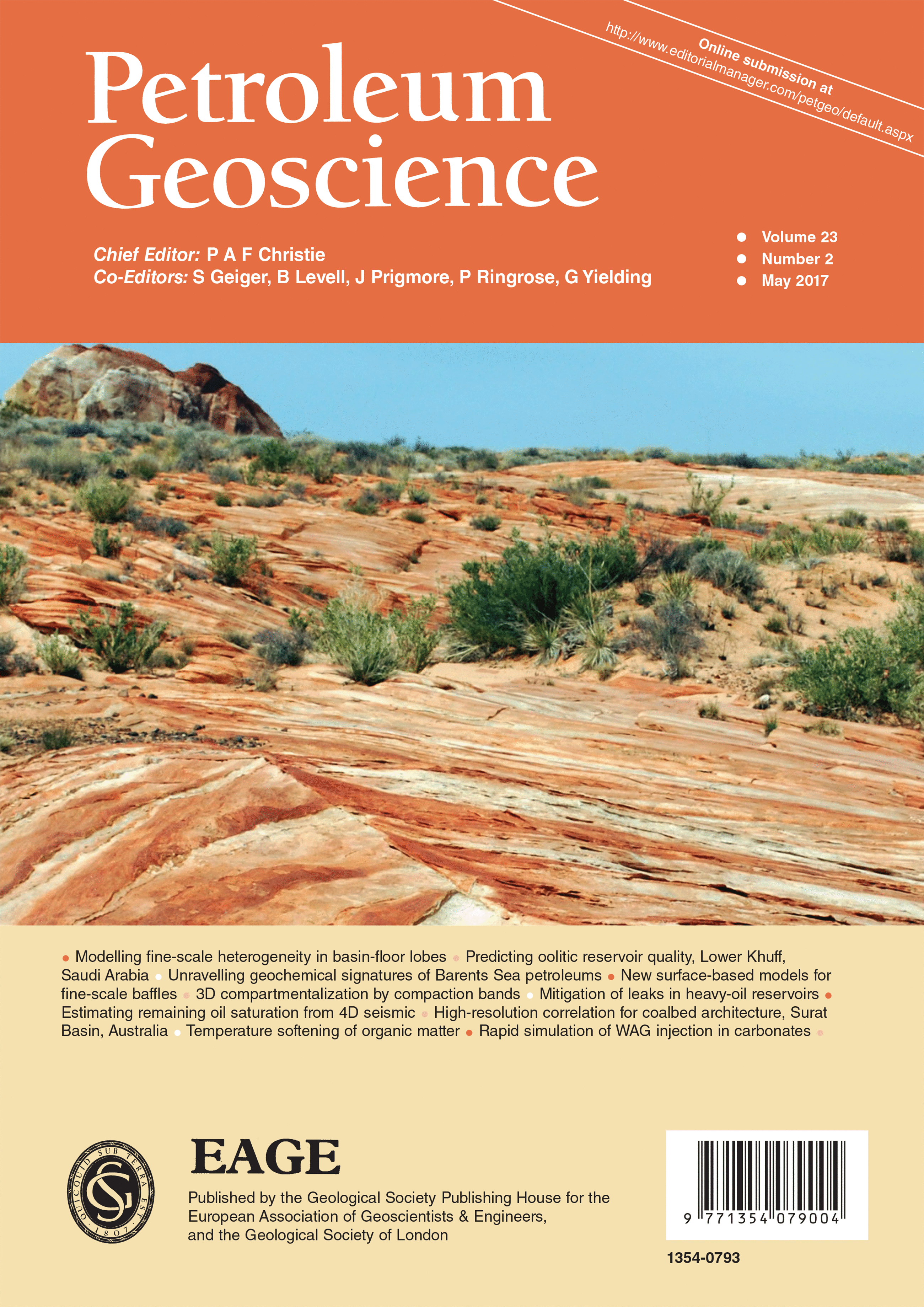
Full text loading...
The Barents Sea hosts multiple source rocks from Palaeozoic to Cretaceous age. Attempts in the past to link individual oil and condensates directly to one type of source rock have often been complicated due to ‘blended-oil’ signatures. As a result of uplift, remigration, alteration and mixing of petroleums, deconvolution of primary petroleum signatures in terms of maturity, age and depositional environment is generally complicated. In this paper, we use δ13C isotopes, and age- and source-related biomarkers to line out the main basin-scale trends concerning the depositional environments and source-rock ages, as well as the type of organic matter input that constitutes the inferred source-rock kerogen. Multivariate statistical analysis was applied as an auxillary tool to suggest petroleum families. Results classify the petroleums into four families: (1) Permian–Triassic-sourced petroleums; (2) Carboniferous-sourced petroleums; (3) Jurassic-sourced petroleums; and (4) phase-fractionated condensates charged from late mature Triassic–Jurassic source rocks. The inferred palaeo-environments for the petroleums cover marine, transitional and terrestrial depositional environments, and display geological variations that prevailed during Permian–Jurassic times. Isotope signatures and age-specific parameters suggest that many oils in the region should be considered as blends or mixtures derived from more than one source rock.

Article metrics loading...

Full text loading...
References


Data & Media loading...

